I would like to set up a many to many relationship in ASP.NET MVC4.
The goal is to extend the default UserProfile class with a list of Timeline objects, which belong to the user.
A Timeline could be shared by multiple users, so the Timeline class should have an list of UserProfile objects aswell.
Timeline class:
namespace MvcApplication1.Models
{
public class Timeline
{
public int Id { get; set; }
public string Name { get; set; }
public string Color { get; set; }
public List<UserProfile> Users { get; set; }
}
public class TimelineContext : DbContext
{
public DbSet<Timeline> Timelines { get; set; }
public DbSet<UserProfile> UserProfiles { get; set; }
// Added the following because I saw it on:
// http://www.codeproject.com/Tips/548945/Generating-Many-to-Many-Relation-in-MVC4-using-Ent
protected override void OnModelCreating(DbModelBuilder modelBuilder)
{
base.OnModelCreating(modelBuilder);
modelBuilder.Entity<Timeline>()
.HasMany(c => c.Users)
.WithMany(s => s.Timelines)
.Map(mc =>
{
mc.ToTable("TimelineOwners");
mc.MapLeftKey("TimelineId");
mc.MapRightKey("UserId");
});
}
}
}
UserProfile class (default class with an added property):
public class UsersContext : DbContext
{
public UsersContext()
: base("DefaultConnection")
{
}
public DbSet<UserProfile> UserProfiles { get; set; }
public DbSet<Timeline> Timelines { get; set; }
// Added the following because I saw it on:
// http://www.codeproject.com/Tips/548945/Generating-Many-to-Many-Relation-in-MVC4-using-Ent
protected override void OnModelCreating(DbModelBuilder modelBuilder)
{
base.OnModelCreating(modelBuilder);
modelBuilder.Entity<UserProfile>()
.HasMany(c => c.Timelines)
.WithMany(s => s.Users)
.Map (mc =>
{
mc.ToTable("TimelineOwners");
mc.MapLeftKey("UserId");
mc.MapRightKey("TimelineId");
});
}
}
[Table("UserProfile")]
public class UserProfile
{
[Key]
[DatabaseGeneratedAttribute(DatabaseGeneratedOption.Identity)]
public int UserId { get; set; }
public string UserName { get; set; }
public List<Timeline> Timelines { get; set; }
}
I have a connection table with foreign keys:



When creating an instance of Timeline, the Users list is null:
Timeline timeline = db.Timelines.Find(id); // timeline.Users = null
Can somebody please enlighten me, how should I set this up working?
I'm totally new to ASP.NET MVC4.
Edit 1: I understand I should not extend UserProfile but create another class to store users. Once the many-to-many relationship works, I will refactor and go into that direction. But first I would like to know why is it not working.
Edit 2: The double context also caused problems, two databases were created for the two contexts and the pure join table was empty in one of them.